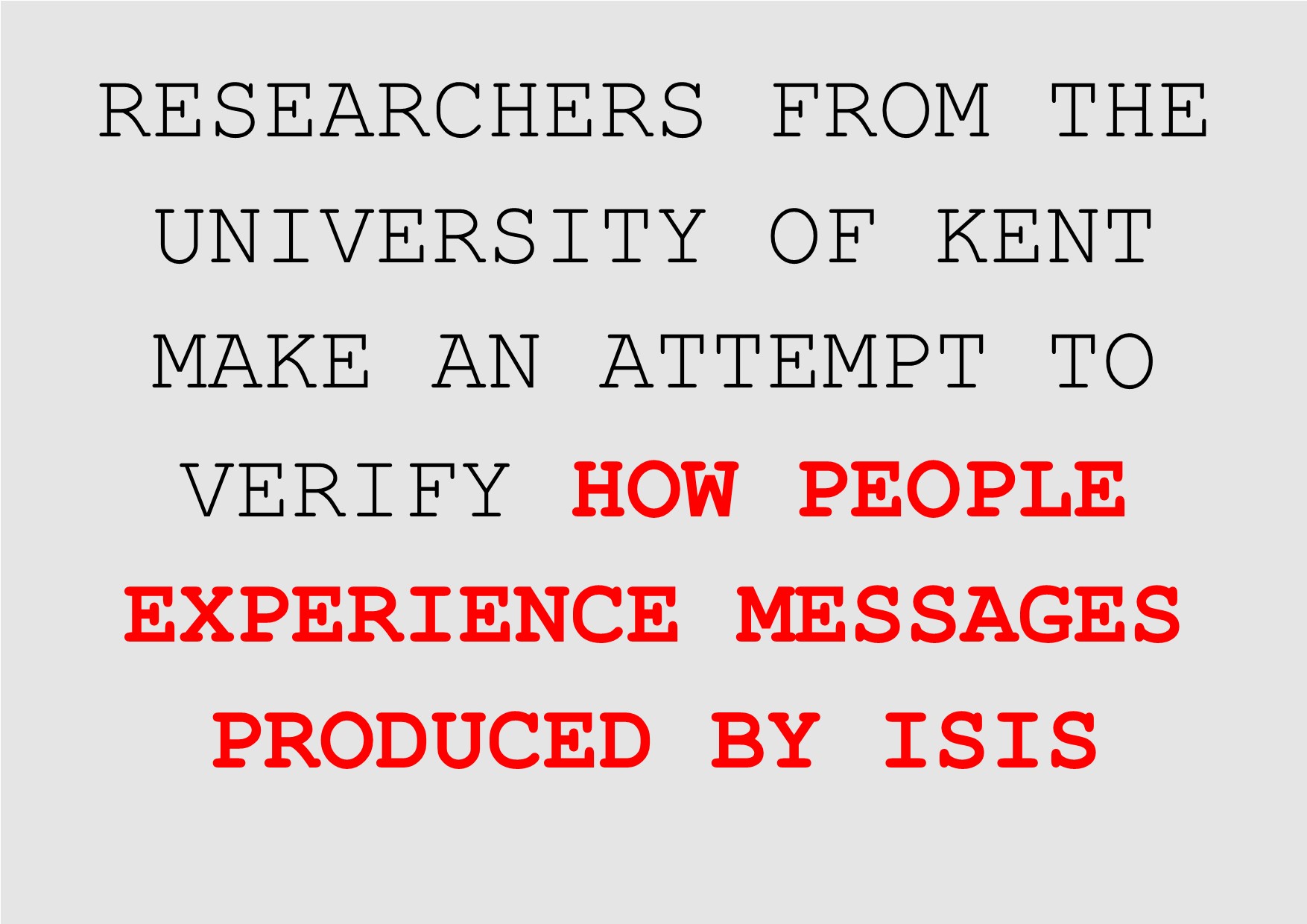
It’s August 19th 2014, the scenario is a desert, there is a man standing on his knees wearing a bright orange clothing next to a hooded man who is a member of ISIS. It is the description of the scene that shows the beheading of the American journalist James Foley. This high quality video was watched by 1.2 million people in Britain in the days immediately after its release according to the anthropologist Frances Larson. ISIS propaganda has increased massively in the past four years, raising the question: What is the role played by jihadist online propaganda (JOP) in the radicalization process?
Simon Cottee and Jack Cunliffe, academics from the University of Kent, published on March 2018 the research Watching ISIS: How Young Adults Engage with Official English-Language ISIS Videos focusing on the targets of ISIS, the audiences, which have been often neglected by scholarly studies that prioritizes the production, content and dissemination of jihadist propaganda. The research was based on data gathered in the Islamic State Audience Reception (ISAR) Survey, an anonymous online survey on ISIS videos that collects the opinion of young adults of all faith backgrounds in Britain and North America. Due to the content of the videos, the survey could only be activated by clicking on a bar that said, “YES, I’M OVER 18” and it was limited to university students. Nearly 3.000 students accepted participate in the survey after signing a form that stated the survey was not advertised on social media and survey’s web address was not available to be found by Internet search engines.
Among the respondents, 1,290 were from North America, and 1,011 were from the United Kingdom; around 431 were from Europe. Their average age was 30. 36% percent identified themselves as having no religion; 17% identified themselves as Christian; and only 4% of the respondents, 135 people, identified themselves as Muslim.
Inspired by an audience study that analysed public responses to soap opera, the authors made an attempt to understand how Muslim young adults in the West—one of ISIS’s primary target audiences—responded to these videos, and whether their responses were different from non-Muslim young adults.
The web page contained four clips from official English-language ISIS videos, pre-edited to exclude graphic images, and the respondents would watch the clips and then inform about the viewing experience. The clips were between 1-2 minutes long and displayed ISIS digital print, Islamic songs composed with Islamic poems and recitations of the Quran, and the usual themes such as power, violence, vengeance, benevolence, Islamic rectitude, and warrior intimidation.
Despite ethical and methodological problems researchers faced during this study, for instance, UK’s legislation that criminalizes the dissemination of terrorist publication and the difficulty in finding Muslims willing to participate in the survey, researchers managed to find some results that may help understanding the psychological effect of ISIS propaganda. Videos that addressed two central themes in ISIS’s ideology – the promise of a utopian state for Muslims and the use of extreme violence to make it happen – had a significant impact on viewers. From 70 up to 80% of them rated these two videos as good or very good in terms of production. The most violent video showed terrorists about to cut the necks of their captives. Although the clip ends before it shows the graphic scene, 33% of the respondents said they wanted to see its completion.
Non-violent videos that addressed themes related to community and the law system implemented by ISIS were received positively by some respondents. A significant number of people (28% of the respondents) agreed ISIS members looked like “decent men” and the video gave them a “warm feeling”.
When it comes to how people usually access these videos, 57% of the interviewees said they have seen ISIS videos before, either on TV or on the internet. 46% of these people affirmed they have searched for this kind of content on the internet.
In spite of all the disgust, discomfort and fear that ISIS extreme violent videos evoke, there is a morbid feeling associated with it that makes a large number of people want to look at them. Some scholars suggest that JOP videos can really trigger or encourage radicalization process. Although, there is no certainty over this hypothesis, the desire among so many of the respondents to watch violent scenes until its conclusion should be a matter of concern.
The full article can be accessed here: https://www.radicalisationresearch.org/research/cottee-isis-young-engage-english-videos/
Ramon de Andrade (Brazil-UFRJ)




